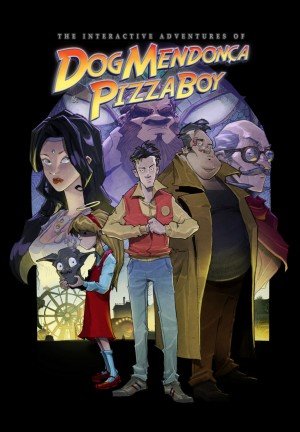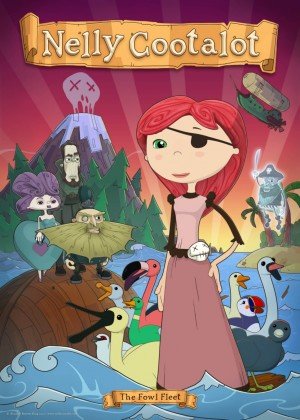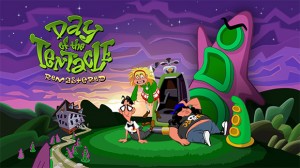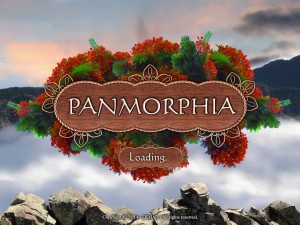Review for Wanda: A Beautiful Apocalypse
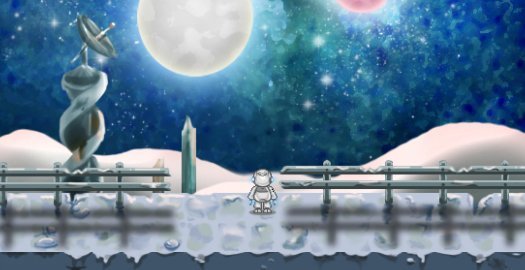
Apocalyptic fiction tends to revolve around mankind’s desperate attempt to survive in a chaotic environment full of violence. Any sense of hope that does exist tends to be short-lived, lost amid the threat of immediate danger. Often the destruction results from our conflict with machines that have grown too powerful to control. Indie developer Kodots Games has taken a different approach with their end-of-the-world tale Wanda: A Beautiful Apocalypse, however, and the result contains a surprising amount of humanity for a game about a pair of robots.
The story begins with the eponymous robot waking up in a stasis facility with others of its kind. After a futile attempt to communicate with your apparently dead comrades, you strike out alone in search of both answers and companionship. Indeed, hope is a recurrent, uplifting theme throughout the game, and rather than a sense of dread, entering new environments provides the possibility for exploration, the primary motivator of your journey.
What makes Wanda so charming is the child-like temperament of the two main characters and the truly impressive emotional scope packed into such a small story. The first time you encounter puddles of a purplish, steaming liquid, Wanda jumps with curiosity into this new experience before leaping out again when the liquid turns out to be painful to touch. Attempts to wake up the numerous inactive robot bodies littering the environment are accompanied by a heartstring-tugging vocalization. And it is genuinely comical when, upon first stumbling across a little red robot who is even more child-like than Wanda (and who becomes your friend from that point on), the pair initially run away from each other in surprise and fear.
There are numerous examples like this throughout, where the characters are humanized in a way that allows for an exploration of the universal need for companionship and hope in troubled times. When a storm brings frightening lightning and thunder, Wanda and Red (whether he has an actual name is unknown to me) huddle up inside a building together to wait for it to pass. During periods of rest, the pair play games and draw pictures in the layers of dust and debris that cover the broken walls and shattered buildings.
There is a sense of melancholy underlying the proceedings, perhaps appropriately, especially when the nature of the tragedy that has befallen the world is finally revealed. Even so, the fact that the bittersweet emotional notes do not extinguish the sense of hopefulness, but are rather bolstered by them, is an impressive achievement that I don’t recall experiencing from any game in recent (or not-so-recent) memory.
The universality of Wanda’s themes are enhanced by the decision to not have the protagonists use human speech. Instead, emotions are indicated by speech bubbles displaying symbols, and, occasionally, facial expressions. When the robots do speak, they do so through a series of electronic grunts and squawks accompanied visually by fictional alphabetic characters, a feature highly reminiscent of the Alienese alphabet used for hiding message-based Easter eggs on the TV show Futurama. The similarity doesn’t end there, either, as Wanda’s alphabet can be deciphered since each character is a 1:1 substitute for its English equivalent. As I played, I became familiar enough with the robo-alphabet that I was able to understand certain words like “hello” or “OK,” similar in effect to the way one becomes able to decipher simple foreign words and phrases through repeated exposure to them. However, I avoided deliberately translating most of it in order to keep the “alien language” effect intact.
Gameplay-wise, Wanda is a very linear experience, with a series of self-contained minigame-like puzzles blocking progress at several points throughout the 4-5 hours of playtime. With no inventory, all puzzles can be considered of the logic variety. Even though there aren’t that many – seven or eight at the most – the ones that are present are actually quite fun, and for the most part provide just the right amount of challenge before you master the task confronting you. There are a variety of activities to perform, many of which showcase the cooperative nature of the game. Such activities include making a path through a field of large boulders by moving them around, and navigating a maze in which certain parts are inaccessible to one robot or the other. There’s even an interesting Portal-inspired sequence involving the use of portal-generating weapons to assist each other in reaching a particular goal.
These tasks are made more difficult by the inclusion of an “energy meter” on each robot that begins full at the beginning of a puzzle and depletes as you perform certain actions. Although there’s no inventory, power orbs found at strategic points throughout each puzzle can, and often must, be picked up to replenish the affected robot’s energy in order to complete the puzzle. If the energy meter on either robot is completely drained, a brief “power-down” animation is shown, followed by an automatic restart of the puzzle. You may also restart a puzzle manually using the ‘Q’ key. The resulting “yes/no” confirmation dialogue uses the robo-alphabet, but is easily decipherable in this context.
A few puzzles allow you to make two or three mistakes before restarting, such as getting zapped by moving electrified barriers that must be avoided. However, there are several occasions when a single mistake leaves an insufficient amount of energy to succeed. This frustration is particularly acute when combined with a series of button-pressing sequences in which you must press the right keys, at the right time, in the right order. While I was able to finally get past the obstacle in which these Quick Time Events occur, for less-dextrous players this puzzle may be too challenging to master, even with repeated attempts. Luckily, after restarting any puzzle a few times a small “skip” icon will appear somewhere near the start of the offending puzzle. While I never needed to use it, it’s a great gesture for those who might otherwise be permanently stuck.
Throughout your journey, collectible icons are hidden around the environment, representing journals that help complete a series of images, one section at a time. It can be challenging to find these journals, as they are sometimes barely peeking out from behind buildings or other parts of the landscape. While they don’t have any actual bearing on gameplay, they show the world as it was before the catastrophe and reveal additional detail for players who take the time to learn and decipher the alphabet, as a sizeable amount of “robo-text” is superimposed on each of the three images.
The third-person controls are entirely keyboard-driven and intuitive for the most part. Arrow keys are used to navigate the environment, while various alphanumeric keys are mapped for actions like pushing or using objects, and swapping between Wanda and Red. Wanda forgoes a proper tutorial in favor of a full-screen dialog box that appears whenever you are introduced to a new action, making it easy to understand. However, it neglects to indicate how to go back to the main menu, an action mapped to the F12 key. It’s a bizarre omission, because there seems to be no other way to exit the game properly.
Saves are another odd aspect of the interface. Saving is performed manually, but in order to do so you must first activate a checkpoint icon, shaped like a floppy disk, that appears floating above the ground. Usually, these appear near the beginning of a puzzle, and are frequent enough that very little backtracking would be necessary if you quit playing before saving at the next checkpoint. Saves appear to be unlimited in number, but the game is small enough that I only used nine, one at each checkpoint.
Graphically, Wanda possesses the crisp precision of hand-painted art, though the characters are slightly more blocky, imbuing them with some old-school pixel art charm. There are a variety of environments, from chrome-clad indoor scenes to dusty-brown outdoor views punctuated by hints of color, such as neon-green light strips on buildings or red planets in the sky. Overall, the graphics have a very “friendly” feel, which is appropriate in a game starring two robots who wouldn’t be out of place in a Disney film. While there’s no single scene that will blow you away, it’s incredible to me how well the art style feels like a visual representation of the characters’ naïvety.
Cinematics are numerous throughout this game. These usually occur after transitioning to a new scene or upon encountering a new puzzle, one of which happens very frequently, usually after no more than two or three intervening scenes. In many ways the cutscenes serve to make an already linear game seem more like a puzzle-punctuated interactive movie, and I suppose in some ways that is exactly what Wanda is. Given that each scene to explore is fairly small, I was annoyed at first with having my explorations constantly interrupted, which surprised me considering that some of my favorite game series of recent years have been the Telltale titles.
However, unlike in Telltale's games, there’s literally nothing for you to do during Wanda's cutscenes except to watch what happens. On the other hand, the control you lose enables the characters to do things that normally wouldn’t be possible for you to make them do, a privilege the developers have wisely employed in order to increase the narrative depth. Much of the emotional weight involves complex character actions and interaction that would be impossible to show if players remained in control. There’s only so much I can say about this topic without spoiling what should be surprising, poignant moments, but suffice it to say that my initial skepticism at constantly being asked to passively watch the game paid off in the end with a cinematic depth that I wasn’t expecting.
Much of Wanda’s cinematic potential is enhanced by the music. If there’s a game soundtrack that deserves to be called a score, it’s this one. For such a compact game, David Lister has composed one of the most emotionally-sweeping video game scores I’ve ever heard. It is entirely orchestral in texture, containing everything from upbeat and lighthearted tracks to awe-inspiring themes to doleful string compositions, changing to fit the necessary mood. Incredibly, it appears that the tracks accompanying the in-game cutscenes are actually composed for, and timed with, events that take place on-screen. Triumphs are marked by swells of music, melancholy moments punctuated with sad tunes. And the tracks that accompany the puzzles and the times when you can freely explore the environment are equally masterful; even though they play on a loop, I never tired of hearing them.
Sound effects are also well-done, consisting of things like electronic beeps and boops when interacting with objects and vocalizations from the two protagonists, among various other noises. Much of it is largely functional in purpose, but the vocalizations provide cues to the robots’ emotional states, such as inquisitiveness, excitement, or fear.
I wasn’t quite sure what to expect from Wanda: A Beautiful Apocalypse before I began, but I certainly wasn’t prepared for how emotionally moving the game would be. Even though it’s fairly short, it packs a lot of very good content into a small package. While the keyboard-based interface and manual save system are a little idiosyncratic, the minigame-like puzzles are challenging and surmountable with practice and time. It may be fairly linear, but the story succeeds at exploring universal themes such as friendship through the lens of its child-like protagonists. This drama is enhanced further by one of the most sweeping game scores I’ve ever heard, running the full emotional gamut. In short, for a game set in an apocalyptic wasteland and starring two robots, Wanda: A Beautiful Apocalypse has more heart and soul packed into its bits and bytes than I’ve seen in a long time, and I completely recommend it.











